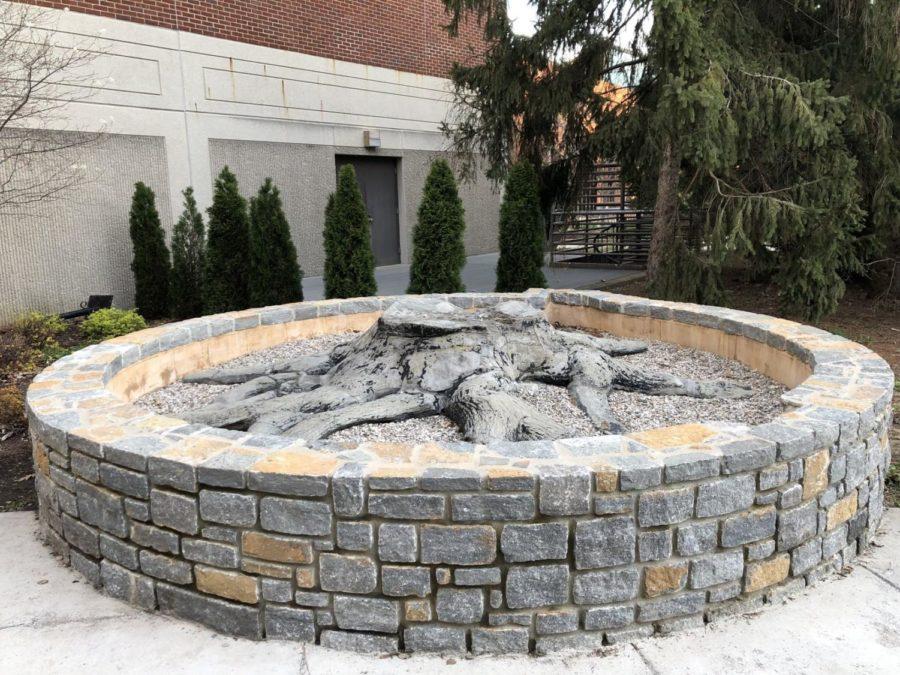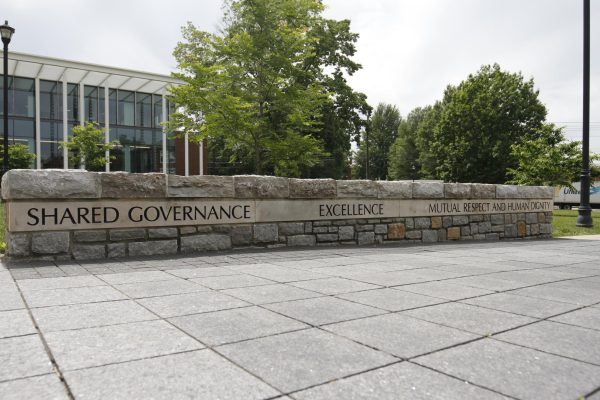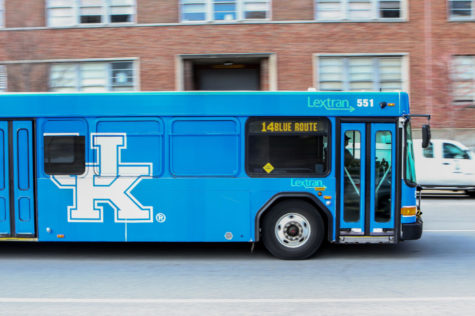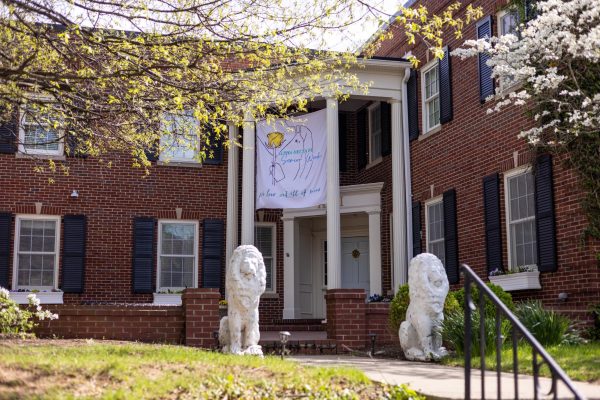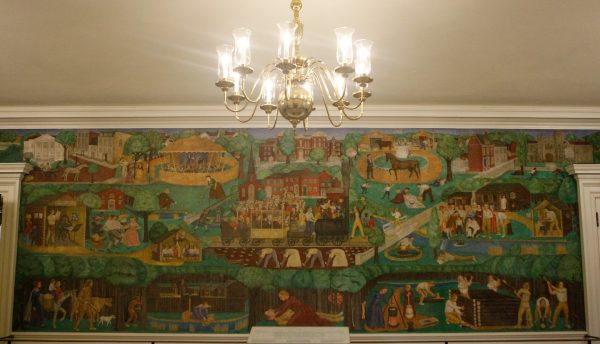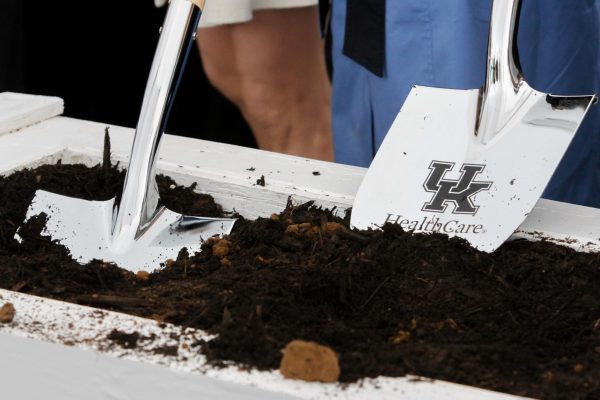What’s the cost of admission at UK? One 230-million-year-old stump
The Whitfield stump, which has been on campus since 1961, recently moved from its longtime location in front of White Hall Classroom Building to the Mining and Minerals Building.
April 8, 2019
Paul Guthrie was a UK student in 1961, when a 230-million-year-old stump was donated to the university. It was given by a man named George Whitfield, earning it the nickname of “the Whitfield stump.”
In early 2019, Guthrie was taking a walk through UK’s campus when he realized the stump was no longer where it used to be— directly in front of White Hall Classroom Building.
“I looked for the Whitfield stump, which I had been familiar with since it was placed at UK, and it was gone,” Guthrie said. “So I started making inquires.”
He found a 2017 Kernel story that detailed the more than five-decade history of the stump at UK, as well as plans to relocate the stump to the Mining and Minerals Resource Building.
That 2017 Kernel article got nearly everything right, but it was missing a critical part of the story— a part that Guthrie knows and wants to share.
The stump’s more modern history began when it fell through the roof of a Clover Fork Coal Company mine in Harlan County in 1938.
“I imagine [that] just scared the absolute hell out of those men,” Guthrie said. “I think most men would’ve blown that thing up as useless rock, and that would’ve been the end of it.”
But that is not what George Whitfield, who managed that mine, did. He had the mine passageway widened and a special car sent in to retrieve the stump.
Before that, the stump had a long geological history, beginning as a tree in the swampy area that used to cover Harlan County. Millions of years made it into the rock-like stump that fell through the mine roof.
Whitfield kept the stump in Kitts, an unincorporated coal town in Harlan County, for several years.
Until his son flunked out of college.
Jesse George Whitfield, who went by George like his father, started at UK in 1960. He was good friends with Guthrie.
Unluckily for him, he flunked out. Luckily for him— and for UK— his father owned a pretty special stump.
“His father… made contact with someone at UK, I don’t know who, and made them a little quid pro quo,” Guthrie said. “‘You let George back in, I’ll give you the stump.’ That’s exactly what happened.”
It’s unlikely that any UK officials involved in that deal are still at the university today, so Guthrie said there’s no one to be embarrassed by his sharing of the story.
At the time, Guthrie said, he thought the whole situation was amusing.
“I hope I also thought— because I certainly think now— that was actually a pretty darn good deal for UK,” he said. “I don’t know how many universities have got this particular asset or one just like it, but it’s pretty neat.”
He said this origin story of the stump relates to the recent college admissions scandal, in which several wealthy and well-known parents used bribery to get their children into prominent colleges.
While these situations are outright bribery, and they are reminiscent of the stump situation, Guthrie said calling Whitfield’s donation of the stump a bribe is “too strong.”
Guthrie said it upset him when he realized the stump had been moved from central campus, where it’s more visible to current students.
Though to be fair, he said, during his previous walks through campus, he never saw “anyone interested enough to go over and look at it.”
Sometimes he’d call students over to show them the stump— mostly because he wanted to tell them his secret history of it.
After his research into where the stump had ended up, he visited it at its new location at the Mines and Minerals building— but he couldn’t find any explanatory sign.
“I thought that institutions destroying its own institutional knowledge is a real loss,” he said.
Tom Novak, a UK professor and Alliance Coal Academic Chair, said the stump has been in its new home for about a year. Currently, there is a temporary sign, with plans for a new sign to be made and mounted. The sign probably won’t contain the parts of the acquisition story that Guthrie shared, he said.
Guthrie said that while he wishes the stump were still centrally located on campus, it is now in a place where more of the students who pass it are likely to be interested in it.
Novak said the people who working in the Mining and Mineral Resources Building, which includes employees of the Kentucky Geological Survey and the Department of Mining Engineering, “certainly value” the stump.
“I feel that it is a significant piece of history (over 300 million years old) and is appreciated by anyone who is working, or has an interest, in the earth sciences,” Novak wrote in an email to the Kernel.
As for Guthrie, he just wants people to know the true story of the stump and its relationship to his friend George.









































































































































